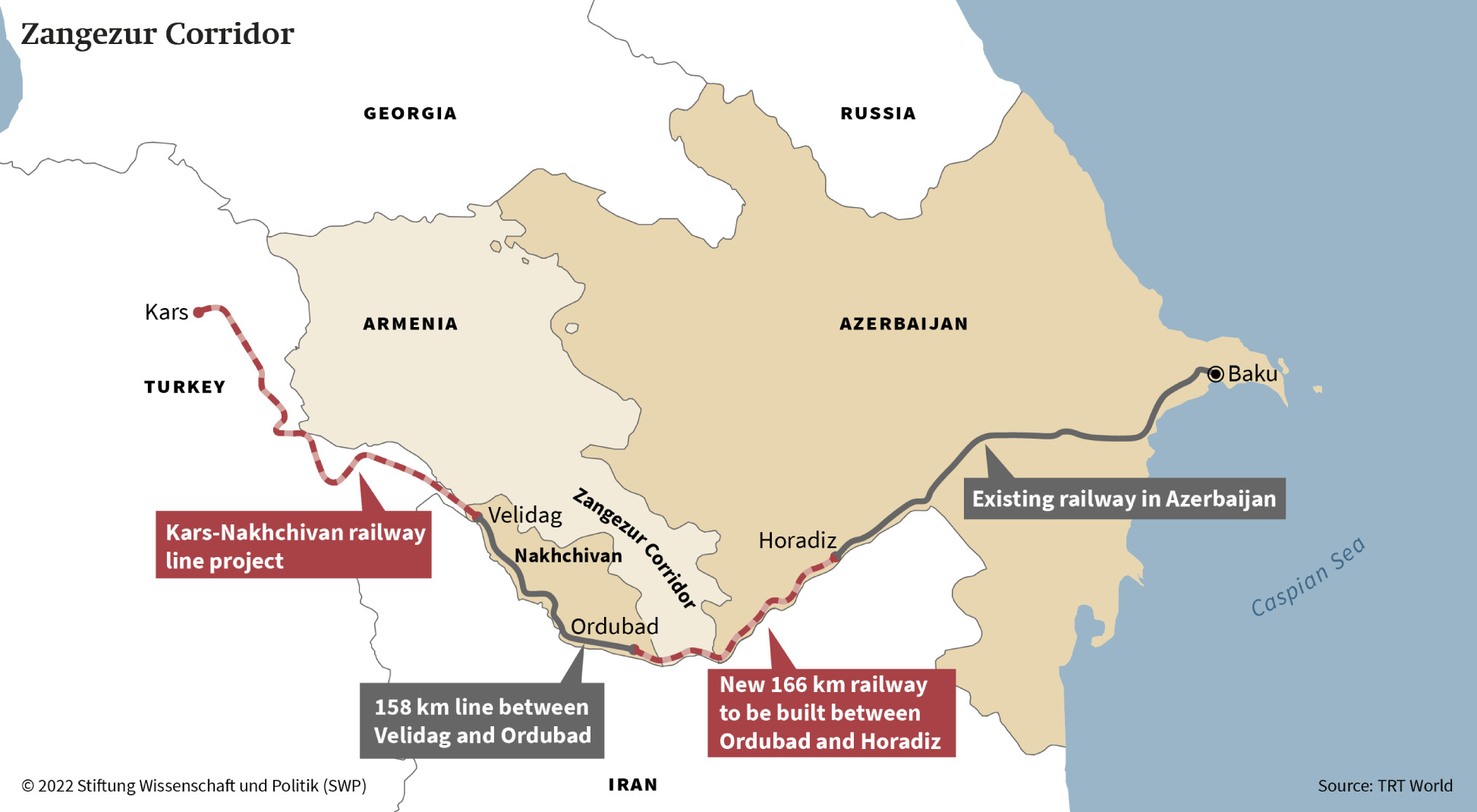Proposed Transportation Corridor Through Armenia: A New Chapter in South Caucasus Connectivity

New Developments in Regional Connectivity: A Proposed Transportation Corridor Through Armenian Territory
In recent geopolitical discussions involving the South Caucasus, a notable development has emerged concerning the establishment of a transportation corridor linking Azerbaijan to its Nakhchivan exclave via Armenian territory. This initiative reflects a strategic push to overcome longstanding connectivity challenges in the region, which have implications not only for economic relations but also for security and sovereignty interests. Among the key features of this emerging proposal is an emphasis on respecting Armenia's jurisdiction over the territory, aiming to foster cooperation without compromising national control.
This approach sets itself apart from previous contentious proposals that raised alarms due to implications of extraterritorial rights for Azerbaijan along the route. Instead, the transportation corridor under consideration is designed to be sovereign, remaining fully under Armenian jurisdiction, and operated with oversight mechanisms that guarantee neutrality. The concept has garnered attention as a potentially viable path forward amid stagnation in regional peace efforts and shifting power dynamics influenced by external actors such as Russia and China.
The strategic importance of this corridor transcends mere transportation logistics. By enabling direct land access between Azerbaijan and the Nakhchivan exclave through Armenia, it offers substantial economic benefits, including facilitating trade, investment, and regional integration. Moreover, it positions Armenia as a critical transit hub, enhancing its geopolitical role as a bridge between East and West. Such a development could contribute to broader regional stability by providing a framework for cooperation that respects sovereignty and security concerns of all parties.
Underlying this initiative is a recognition of the complex historical context characterized by intermittent conflict and unresolved territorial disputes. Armenia's concerns about maintaining security and sovereignty over its southwestern province remain paramount. The southern province in question has been at the epicenter of these discussions, with Armenian leadership consistently emphasizing the necessity of retaining control over customs, security, and operational aspects of any transit corridor. This insistence seeks to ensure that economic development and regional connectivity do not come at the expense of national integrity.
Conversely, Azerbaijan, with the backing of Turkey, has historically advocated for a corridor with extraterritorial rights, viewing it as vital to reconnecting the Nakhchivan exclave by land and boosting regional commerce. However, this demand has been met with skepticism due to concerns about sovereignty and the precedent such arrangements might set. The new proposals aim to reconcile these divergent positions by introducing third-party management and international oversight, thus providing assurances to Armenia while meeting Azerbaijan’s connectivity goals.
One of the more intriguing aspects of the current plan involves the potential for a neutral third-party operator, possibly a U.S.-based commercial logistics firm, to oversee cargo transit along the corridor. This model draws inspiration from previous European initiatives intended to foster trust and stability through impartial management. The involvement of an external actor could help alleviate tensions by ensuring transparency and neutrality, addressing both security concerns and economic imperatives.
This externally supervised corridor could also serve as a template for broader conflict resolution strategies in the South Caucasus. In a region historically influenced by Russian and Chinese presence, the engagement of other stakeholders introduces fresh dynamics and opportunities. By promoting infrastructure development under principles of sovereignty and mutual respect, the plan reflects a strategic pivot to diversify regional partnerships and reduce exclusive dependencies.
The economic implications are significant. Improved transport infrastructure can facilitate the flow of goods and services, stimulate investment, and create new opportunities for employment and commerce. For Armenia, the corridor represents not only a chance to enhance its domestic economic prospects but also an opportunity to become a vital node in transcontinental trade routes, thus elevating its international profile.
Furthermore, the initiative's success depends heavily on political consensus within Armenia and between the involved parties. Achieving broad agreement on such a sensitive matter requires overcoming historical grievances and suspicions. It also demands careful negotiation to balance the sovereignty and security concerns with the potential economic and geopolitical benefits. This complex interplay underscores the importance of dialogue, international mediation, and confidence-building measures in the region.
Armenia’s vision of regional connectivity, sometimes encapsulated in the idea of a "Crossroads of Peace," emphasizes unimpeded transit while maintaining full sovereignty over transport infrastructure. This vision has received positive signals from various international partners and aims to provide a framework that respects territorial integrity and promotes peaceful cooperation. Aligning with this approach could help legitimise the corridor as a mutually beneficial and sustainable solution.
Looking ahead, the corridor initiative might influence ongoing negotiations and peace processes. By offering Armenia leverage through enhanced regional relevance and economic integration, it could create incentives for more constructive dialogue with neighbors. Meanwhile, Azerbaijan’s stance, especially regarding extraterritorial claims, will be a key factor shaping the feasibility of the plan. Turkey’s supportive role for Azerbaijan also adds layers of complexity to diplomatic efforts.
In conclusion, the proposed establishment of a sovereign transportation corridor through Armenia is a multifaceted development with the potential to transform regional connectivity in the South Caucasus. Balancing security, sovereignty, and economic growth, the plan offers a fresh framework for cooperation that accommodates the interests of all stakeholders while addressing historical sensitivities. If implemented with broad consensus and effective oversight, it could serve as a catalyst for enhanced stability and prosperity, positioning the region as a strategic bridge between different parts of the world. Continued dialogue and international collaboration will be essential in realizing this vision and unlocking the full potential of regional infrastructure and cooperation.
